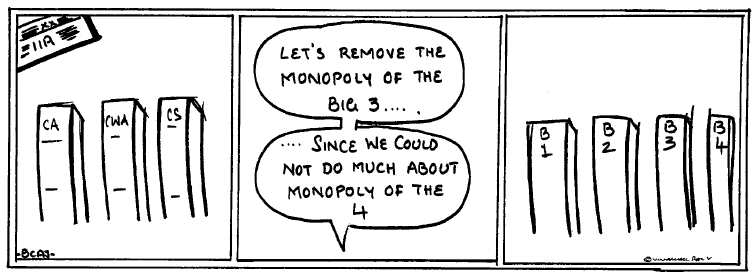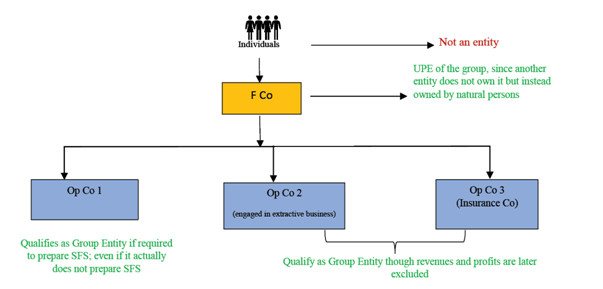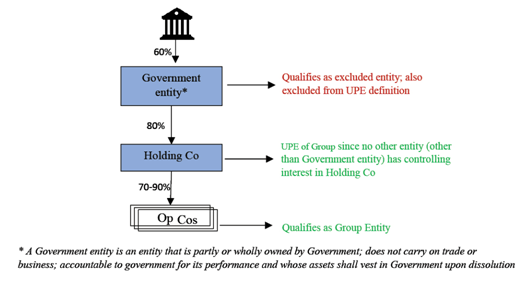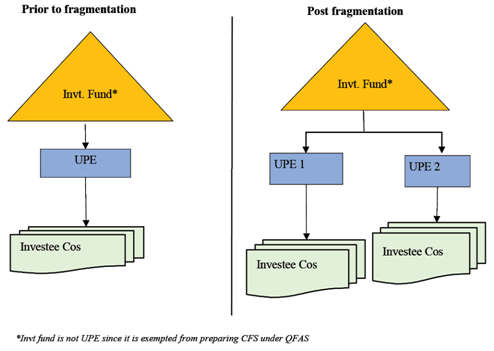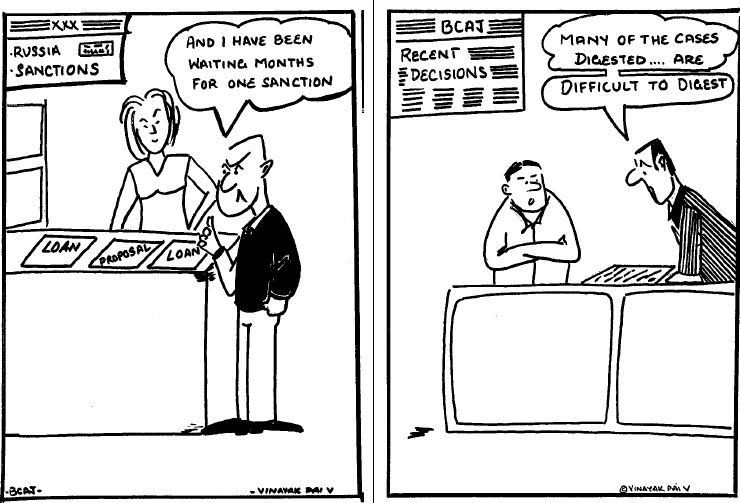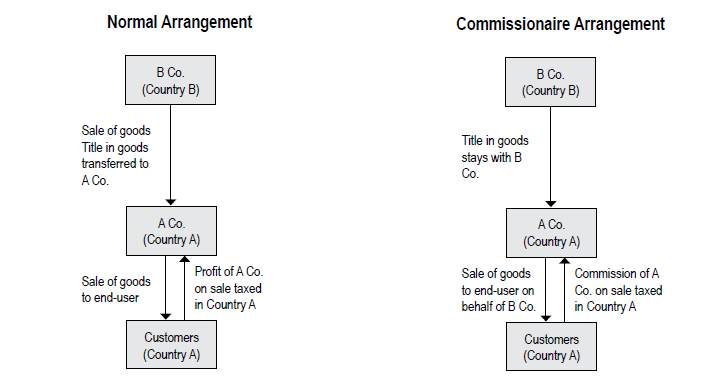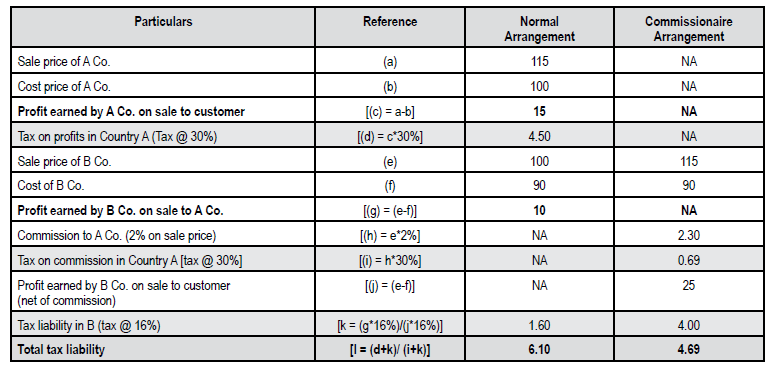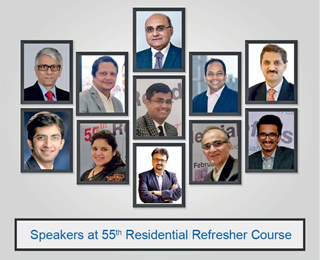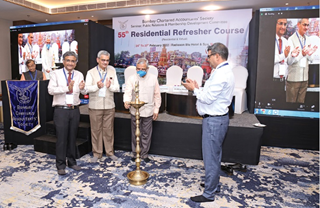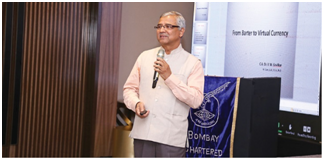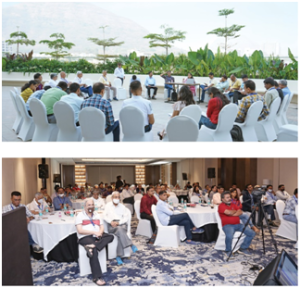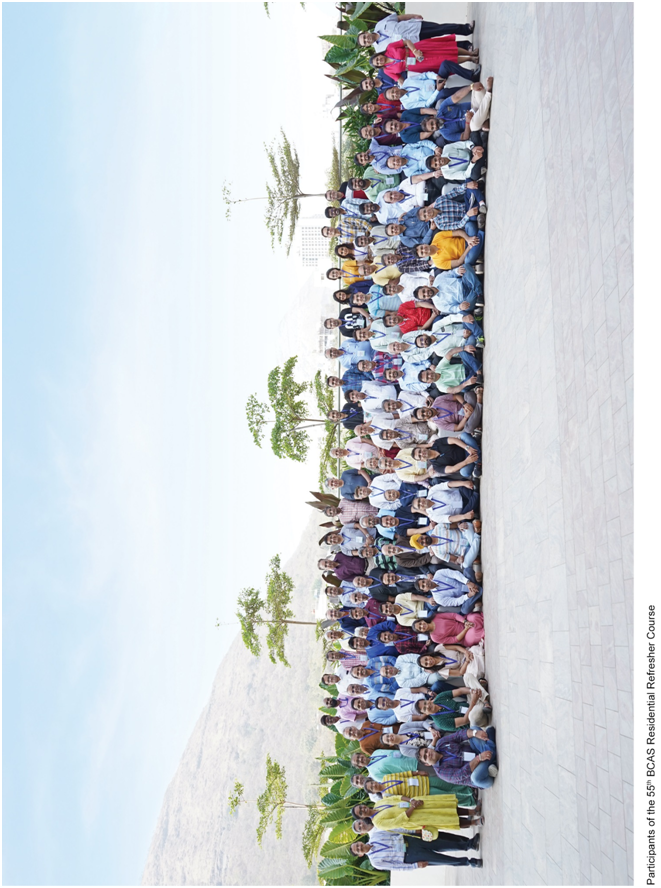Finance
Minister Smt. Nirmala Sitharaman presented her fourth regular Budget in
Parliament on 1st February,2022. In her Budget speech, she emphasised
four priorities, namely (i) PM Gatishakti, (ii) inclusive development,
(iii) productivity enhancement & investment, sunrise opportunities,
energy transition and climate action and (iv) financing of investments.
The Finance Minister has given a detailed explanation of the measures
that the Government proposes to take in the coming years.
The Finance Minister has also introduced the Finance Bill, 2022, containing 84 sections amending various sections of the Income-tax Act. Before the passage of the Bill, 39 amendments to the Bill were
introduced in Parliament. The Parliament passed the Bill with the
amendments on 29th March, 2022. The Finance Act, 2022, has received the
assent of the President on 30th March, 2022. By this Act, several
amendments are made to the Income-tax Act, increasing the burden of
compliance for tax payers. However, there are some amendments which will
give some relief to taxpayers. Contrary to the Government’s declared
policy , there are some amendments that will have retrospective effect.
In this article, some of the important amendments in the Income tax-Act
(Act) are discussed.
2. RATES OF TAXES FOR A.Y. 2023-24
2.1
There are no changes in the slabs and the rates for an Individual, HUF,
AOP and BOI. The tax rates remain unchanged in the case of a Firm
(including LLP), Co-operative Society and Local Authority. In the case
of a Domestic Company, the tax rate remains the same at 25% if a
company’s total turnover or gross receipts for F.Y. 2020-21 was less
than R400 Crore. In the case of other larger companies, the tax rate
will be 30%. The rate of 4% of the tax for ‘Health and Education Cess’
will continue for all assessees. Apart from what is stated in Para 2.2,
the rates of surcharge are the same as in earlier years.
2.2 It
may be noted that some relief in rates of surcharge is given in A.Y.
2023-24 (F.Y. 2022-23). The revised rates of surcharge are as under:
(i) Individual, HUF, AOP / BOI
There
is no change in the surcharge rates on slab rates in A.Y. 2023-24.
However, the surcharge on income taxable under sections 111A, 112, and
112A and dividend income will not exceed 15%.
(ii) AOP (having corporate members only)
In
the case of AOP having only corporate members, the rate of surcharge
will be 7% if the income exceeds R1 crore but does not exceed R10
crores. The rate of surcharge will be 12% if the income exceeds R10
crores.
(iii) Co-operative Societies
The rate of
surcharge is reduced for A.Y. 2023-24 to 7% if the income is more than
R1 crore, but less than R10 crore. In respect of income exceeding R10
crore, the rate of surcharge is unchanged at 12%.
2.3. Alternate Minimum Tax
In
the case of co-operative societies, the Alternate Minimum Tax (AMT)
payable u/s 115JC is reduced from 18.5% to 15% from A.Y. 2023-24 (F.Y.
2022-23).
3. TAX DEDUCTION AND COLLECTION AT SOURCE (TDS AND TCS)
3.1 Section 194-IA:
This section is amended w.e.f. 1st April, 2022 – tax at 1% is to be
deducted on higher of stamp duty value or the transaction value. When
the consideration and stamp duty valuation is less than R50 Lakhs, no
tax is required to be deducted.
3.2 Section 194R: (i) This new section comes into force from 1st April, 2022.
It provides that tax shall be deducted at source at 10% of the value of
the benefit or perquisite arising from business or profession if the
value of such benefit or perquisite in a financial year exceeds R20,000.
(ii) The provisions of this section are not applicable to an
Individual or HUF whose sales, gross receipts or turnover does not
exceed R1 crore in the case of business or R50 Lakhs in the case of
profession during the immediately preceding financial year.
(iii)
The section also provides that if the benefit or perquisite is wholly
in kind or partly in kind and partly in cash, and the cash portion is
not sufficient to meet the TDS amount, then the person providing such
benefit or perquisite shall ensure that tax is paid in respect of the
value of the benefit or perquisite before releasing such benefit or
perquisite.
(iv) In the Memorandum explaining the provisions of
the Finance Bill, 2022, it is clarified that section 194R is added to
cover cases where the value of any benefit or perquisite arising from
any business or profession is chargeable to tax u/s 28(iv). Therefore,
this new TDS provision will apply only when the value of the benefit or
perquisite is chargeable to tax in the hands of the person engaged in
the business or profession u/s 28(iv). It is also provided that the
Central Government shall issue guidelines to remove any difficulty that
may arise in implementing this section.
3.3 Section 194-S: (i) This is a new section which will come into force on 1st July, 2022
– which provides that any person paying to a resident consideration for
transfer of any Virtual Digital Asset (VDA) shall deduct tax at 1% of
such sum. In a case where the consideration for transfer of VDA is (a)
wholly in kind or in exchange of another VDA, where there is no payment
in cash or (b) partly in cash and partly in kind but the part in cash is
not sufficient to meet the liability of TDS in respect of the whole of
such transfer, the payer shall ensure that tax is paid in respect of
such consideration before releasing the consideration. However, this TDS
provision does not apply if such consideration does not exceed R10,000
in the financial year.
(ii) Section 194-S defines the term
‘Specified Person’ to mean a person being an Individual or a HUF, whose
total sales, gross receipts or turnover from business or profession does
not exceed R1 crore in case of business or R50 Lakhs in the case of
profession, during the financial year immediately preceding year in
which such VDA is transferred or being Individual or a HUF who does not
have income under the head ‘Profits and Gains of Business or
Profession’. In the case of a Specified Person –
(a) The
provisions of section 203A relating to Tax Deduction and Collection
Account Number and section 206AB relating to special provision for TDS
for non-filers of Income-tax returns will not apply.
(b) If the
value or the aggregate value of such consideration for VDA does not
exceed Rs. 50,000 during the financial year, no tax is required to be
deducted.
(iii) In the case of a transaction to which sections
194-O and 194-S are applicable, then tax is to be deducted u/s 194-S and
not u/s 194-O.
3.4 Sections 206AB and 206CCA: These
sections deal with a higher rate of TDS and TCS in cases where the payee
has not filed his Income-tax returns for two preceding years and in
whose case aggregate TDS/TCS exceeds R50,000. At present, section 206AB
is not applicable in respect of TDS under sections 192, 192A, 194B,
194BB, 194BL and 194N. By amendment, effective from 1st April, 2022,
it is now provided that TDS/TCS at higher rates in such cases will not
apply u/s 194IA, 194IB and 194M where the payer is not required to
obtain TAN. Further, the test of non-filing the Income-tax returns under
sections 206AB/206CCA has been now reduced from two preceding years to
one preceding year.
4. DEDUCTIONS
4.1 Section 80CCD: At
present, the deduction for employer’s contribution to National Pension
Scheme (NPS) is allowed to the extent of 14% of the salary in the case
of Central Government employees. For others, the deduction is restricted
to 10% of the salary. In order to give benefit to State Government
employees, section 80CCD(2) is amended with retrospective effect from A.Y. 2020-21 (F.Y. 2019-20).
By this amendment, the State Government employees will now get a
deduction for employer’s contribution to NPS to the extent of 14% with
retrospective effect.
4.2 Section 80DD: At present, a
deduction is allowed in respect of the contribution to a prescribed
scheme for maintenance of a dependent disabled person if such scheme
provides for payment of the annuity or lump sum to such dependent person
in the event of death of the assessee contributing to the scheme, i.e.
the parent or guardian. This section is amended effective from A.Y. 2023-24 (F.Y. 2022-23)
to allow a deduction for such contribution even where the scheme
provides for payment of annuity or lump sum to the disabled dependent
when the assessee contributor has attained the age of 60 years or more
and the deposit to such scheme has been discontinued. It is also
provided by the amendment that such receipt of annuity or lump sum by
the disabled dependent shall not result in the contribution made by the
assessee to the scheme taxable.
4.3 Section 80-IAC: At
present, an eligible start-up incorporated on or after 1st April, 2016
but before 1st April, 2022, is entitled to claim an exemption of profits
for three consecutive assessment years out of ten years from the year
of incorporation. For this purpose, the conditions laid down in this
section should be complied. This section is now amended to provide that
the above benefit will be available to a start-up company incorporated
on or before 31st March, 2023.
4.4 Section 80LA: This
section provides for specified deduction in respect of income arising
from the transfer of an ‘aircraft’ leased by a unit in International
Financial Services Centre (IFSC) if the unit has commenced operation on
or before 31st March, 2024. The amendment of this section has extended
this benefit to a ‘ship’ effective A.Y. 2023-24 (F.Y. 2022-23).
5. CHARITABLE TRUSTS AND INSTITUTIONS
Significant
amendments were made in the procedural provisions relating to
Charitable Trusts and Institutions in sections 10(23C), 12A and 12AA of
the Income-tax Act by Finance Acts 2020 and 2021. A new section 12AB was
added to the Income-tax Act. This year, far-reaching amendments are
made in sections 10(23C), 11 and 13 dealing with Specified Universities,
Educational Institutions, Hospital etc. (herein referred to as
‘Institutions’) and Charitable and Religious Trusts (herein referred to
as ‘Charitable Trusts’). These amendments are as under:
5.1 Institutions Claiming Exemptions u/s 10(23C)
Section
10(23C) of the Act provides for exemption to a Specified University,
Educational Institutions, Hospitals etc., (Institutions). This section
is amended as under:
(i) Section 10(23C)(v) grants exemption to
an approved Public Charitable or Religious Trusts. It is now provided
that if any such Trust includes any temple, mosque, gurudwara, church or
other notified place and the Trust has received any voluntary
contribution for the purpose of renovation or repair of these places of
worship, the Trust will have option to treat such contribution as part
of the Corpus of the Trust. It is also provided that this Corpus amount
shall be used only for this specified purpose and the amount not
utilized shall be invested in specified investments listed in section
11(5) of the Act. It is also provided that if any of the above
conditions are violated, the amount will be considered as income of the
Trust for the year in which such violation takes place. This provision
will come into force from A.Y. 2021-22 (F.Y. 2020-21).
It may be noted that a similar provision is added, effective A.Y. 2021-22 (F.Y. 2020-21), in section 11 in respect of Charitable or Religious Trusts claiming exemption u/s 11.
(ii)
At present, an Institution claiming exemption u/ 10(23C) must utilise
85% of its income every year. If this is not possible, it can accumulate
the unutilised income within 5 years. However, there is no provision
for any procedure to be followed for such accumulation. The amendment to
section 10(23C), effective from A.Y. 2023-24 (F.Y. 2022-23),
now provides that the Institution should apply to the Assessing Officer
(AO) in the prescribed form before the due date for filing the return
of income for accumulation of unutilised income within 5 years. The
Institution must state the purpose for which the income is being
accumulated. By this amendment, the provisions of section 10(23c) are
brought in line with section 11 of the Act.
(iii) At present,
section 10(23C) provides for an audit of accounts of the Institution. By
amendment, it is now provided that, effective from A.Y. 2023-24 (F.Y. 2022-23),
the Institution shall maintain its accounts in such manner and at such
place as may be prescribed by the Rules. Such accounts will have to be
audited by a CA, and a report in the prescribed form will have to be
given by him.
(iv) Section 10(23C) is also amended by replacing
the existing proviso XV to give very wide powers to the Principal CIT to
cancel approval or provisional approval given to the Institution for
claiming exemption. If the Principal CIT comes to know about specified
violations by the Institution, he can conduct an inquiry, and after
giving an opportunity to the Institution, cancel the approval or
provisional approval. The term ‘specified violations” is defined in this
amendment.
(v) By another amendment to section 10 (23C), effective from A.Y. 2023-24 (F.Y. 2022-23), it is provided that the Institution shall file their returns of income by the due date specified in section 139(4C).
(vi)
A new Proviso XXI is added in section 10(23C) to provide that if any
benefit is given to persons mentioned in section 13(3), i.e., author of
the Institution, Trustees or their related persons, such benefit shall
be deemed to be the income of the Institution. This will mean that if a
relative of a trustee is given free education in the educational
Institution, the value of such benefit will be considered as income of
the Institution. In this case, the tax will be charged at 30% plus
applicable surcharge and cess u/s 115BBI.
(vii) It may be noted that section 56(2)(x) has been amended from A.Y. 2023-24 (F.Y. 2022-23)
to provide that if the Author, Trustees or their related persons as
mentioned in section 13(3) receive any unreasonable benefit from the
Institution or Charitable Trust exempt under sections 10(23C) or 11, the
value of such benefit will be taxable as ‘Income from Other Sources’.
(viii)
At present, the provisions of section 115TD apply to a Charitable or
Religious Trust registered u/s 12AA or 12AB. Now, effective from A.Y. 2023-24 (F.Y. 2022-23), the
provisions of section 115TD will apply to any University, Educational
Institution, Hospital etc., claiming exemption u/s 10(23C) also. Section
115TD provides that if the Institution loses exemption u/s 10(23C) due
to cancellation of its approval or due to conversion into a
non-charitable organization or other reasons, the market value of all
its assets, after deduction of liabilities, will be liable to tax at 30%
plus applicable surcharge and cess.
5.2 Charitable Trusts claiming exemption u/s 11
Sections
11, 12 and 13 of the Act provide exemption to Charitable Trusts
(Including Religious Trusts), registered u/s 12A, 12AA or 12AB. Some
amendments are made in these and other sections as stated below:
(i)
As stated above, if a Charitable Trust owns any temple, mosque,
gurudwara, church etc., it can treat any contribution received for
repairs or renovation of such place of worship as corpus donation. This
amount should be used for the specified purpose. The unutilized amount
should be invested as provided in section 11(5). This provision will
come into force from A.Y. 2021-22 (F.Y. 2020-21).
(ii)
At present, if a Charitable Trust is not able to utilise 85% of its
income in a particular year, it can apply to the AO for permission for
the accumulation of such income for 5 Years. If any amount out of such
accumulated income is not utilised for the objects of the Trust up to
the end of the 6th year, it is taxable as income in the sixth year. This
provision has now been amended, effective from A.Y. 2023-24 (F.Y. 2022-23),
to provide that if the entire amount of the accumulated income is not
utilised up to the end of the 5th Year, the unutilised amount will be
considered as income of the fifth year and will become taxable in that
year.
(iii) If a Charitable Trust is maintaining accounts on an accrual basis of accounting, it is now provided that any
part of the income which is applied to the objects of the Trust, the
same will be considered as application for the objects of the Trust only
if it is actually paid in that year. If paid in a subsequent year,
it will be considered as application of income in the subsequent year.
This amendment will come into force from A.Y. 2022-23 (F.Y. 2021-22).
(iv)
Section 13 deals with the circumstances in which exemption under
section 11 can be denied to Charitable Trusts. At present, if any income
or property of the Trust is utilised for the benefit of the Author,
trustee or related persons stated in section 13(3), the exemption is
denied to the Trust. Now, effective from A.Y. 2023-24 (F.Y. 2022-23),
this section is amended to provide that only that part of the income
which is relatable to the unreasonable benefit allowed to the related
person will be subjected to tax in the hands of the Charitable Trust.
This tax will be payable at 30% plus applicable surcharge and cess.
(v)
At present, section 13(1)(d) provides that if any funds of the
Charitable Trust are not invested in the manner provided in section
11(5), the Trust will not get exemption u/s 11. This section is now
amended, effective from A.Y. 2023-24 (F.Y. 2022-23), to
provide that the exemption will be denied only in respect of the income
from such prohibited investments. Tax on such income will be chargeable
at 30% plus applicable surcharge and cess.
(vi) Section 12A has been amended, effective from A.Y. 2023-24 (F.Y. 2022-23),
to provide that the Charitable Trust shall maintain its accounts in the
manner as may be prescribed by Rules. These accounts will have to be
audited by a Chartered Accountant.
(vii) In line with the
amendment in section 10(23c) proviso XV, very wide powers are now given,
by amending section 12AB (4), to the Principal CIT to cancel
registration given to a Charitable Trust for claiming exemption. If the
Principal CIT comes to know about specified violations by the Charitable
Trust, he can conduct an inquiry and after giving opportunity to the
Trust, cancel its registration. The term ‘Specified Violations’ is
defined by this amendment.
5.3 Special Rate of Tax
A new section 115BBI has been added, effective from A.Y. 2023-24 (F.Y. 2022-23),
for charging tax at 30% plus applicable surcharge and cess. This rate
of tax will apply to registered Charitable Trusts, Religious Trusts,
Educational Institutions, Hospitals etc., in respect of the following
specified income:
(i) Income accumulated in excess of 15% of the income where such accumulation is not allowed.
(ii)
Where the income accumulated by the Charitable Trust or Institution is
not utilised within the permitted period and is deemed to be the income
of the year when such period expires.
(iii) Income which is not
exempt u/s 10(23c) or section 11 by virtue of the provisions of section
13(1)(d). This will include the value of benefit given to related
persons, income from Investments made otherwise then what is provided in
section 11(5) etc.
(iv) Income which is not excluded from the
total income of a Charitable Trust u/s 13(1) (c). This refers to the
value of benefits given to related persons.
(v) Income which is
not excluded from the total income of a Charitable Trust u/s 11(1) (c).
This refers to income of the Trust applied to objects of the Trust
outside India.
5.4 New Provisions for Levy of Penalty
New
section 271 AAE is added in the Income-tax Act for levy of penalty on
Charitable Trusts and Institutions claiming exemption under sections
10(23C) or 11. This penalty relates to benefits given by the Charitable
Trusts or Institutions to related persons. The new section provides that
If an Institution claiming exemption u/s 10(23C) or a Charitable Trust
claiming exemption u/s 11 gives an unreasonable benefit to the Author of
the Trust, Trustee or other related persons in violation of proviso XXI
of section 10(23C) or section 13(1) (c), the AO can levy penalty on the
Trust or Institution as under:
(i) 100% of the aggregate amount
of income applied for the benefit of the related persons where the
violation is noticed for the first time.
(ii) 200% of the aggregate amount of such income where the violation is noticed again in the subsequent year.
6. INCOME FROM BUSINESS OR PROFESSION
6.1 Section 14A:
At present, expenditure incurred in relation to exempt income is not
allowed as a deduction. There was a controversy as to whether section
14A would apply when there was no income from a particular investment.
This section is now amended effective from A.Y. 2022-23 (F.Y. 2021-22)
to clarify that the disallowance under this section can be made even in
a case where no exempt income had accrued or was received, and
expenditure was incurred. It is also clarified that the provisions of
section 14A will apply notwithstanding anything to the contrary
contained in the Income-tax Act.
6.2 Section 35 (1A):
Section 35 allows deduction of expenditure on scientific research. Under
section 35(1A), such deduction is denied under certain circumstances.
This section is now amended effective from A.Y. 2021-22 (F.Y. 2020-21) to
provide that the donor will not be allowed a deduction in respect of
the donation for research u/s 35 if the donee has not filed a statement
of donations before the specified authorities.
6.3 Section 17: This section is amended effective from A.Y. 2020-21 (F.Y. 2019-20) to
provide that any sum paid by the employer in respect of any expenditure
actually incurred by the employee on medical treatment of the employee
or any of his family members for treatment relating to COVID-19 shall
not be regarded as taxable perquisite. This will be subject to such
conditions as may be notified by the Central Government.
6.4 Section 37(1): At
present, Explanation 1 to section 37(1) provides that any expenditure
incurred for any purpose which is an offence or which is prohibited by
law shall not be allowed as a deduction while computing income under the
head ‘Profits and Gains of Business or Profession’. Now Explanation – 3
is added from A.Y. 2022-23 (F.Y. 2021-22) to clarify that the following types of expenses shall not be allowed while computing the business income of the assessee:
(i)
Expenditure incurred for any purpose which is an offence under, or
which is prohibited by, any law in India or outside India, or
(ii)
Any benefit or perquisite provided to a person, whether or not for
carrying on business or profession, where its acceptance is in violation
of any law or rule or regulation or guidelines governing the conduct of
such person, or
(iii) Expenditure incurred to compound an
offence under any law, in India or outside India. It may be noted that
this amendment may affect the benefits or perquisites provided by
pharmaceutical companies to medical professionals. If any benefit or
perquisite is received by a medical professional from a pharmaceutical
company, the same is taxable as the income of the medical professional
u/s 28 (iv). This will now suffer TDS at 10% of the value of such
benefit or perquisite under new section 194R. Further, it will be
difficult to find out whether a particular benefit is prohibited by law
in a foreign country.
6.5 Section 40(a) (ii): (i) Tax
levied on ‘Profits and Gains of Business or Profession’ is not allowed
as a deduction under this section. In the case of Sesa Goa Ltd vs. JCIT 117 taxmann.com 96,
the Bombay High Court held that the term ‘tax’ will not include ‘cess’
levied on tax. A similar view was taken by the Rajasthan High Court.
This section is now amended retrospectively effective from A.Y. 2005-06 (F.Y. 2004-05),
and it is now provided that the term ‘tax’ shall include any surcharge
or cess on such tax. Thus, no deduction will be allowable for ‘cess’ on
the basis of the above High Court decisions.
(ii) It may be noted
that section 155 has been amended from 1st April, 2022 to provide for
the amendment of the computation of income/loss in a case where
surcharge or cess has been claimed and allowed as a deduction in
computing total income. This amendment is as under:
(a) If the
assessee has claimed the deduction for surcharge or cess as business
expenditure, the AO can rectify the computation of income or loss u/s
154. He can also treat this deduction as under-reported income u/s
270A(3) and levy a penalty under that section. For this purpose, the
limitation period of 4 years u/s 154 shall be counted from 31st March
2022. This will mean that such a rectification order can be passed on or
before 31st March, 2026.
(b) However, if the
assessee makes an application to the AO in the prescribed form and
within the prescribed time, requesting for recomputation of the income
by excluding the above claim for deduction of surcharge or cess and pays
the amount due thereon within the specified time, no penalty under
section 270A will be levied. It appears that interest will also be
payable with the tax.
(iii) This is a retrospective legislation.
The claim for deduction of surcharge or cess may have been made by some
assessees in view of the High Court decision. To levy a penalty u/s 270A
for such a claim made in earlier years is a very harsh provision.
6.6 Section 43B:
This section provides that interest payable on an existing loan or
borrowing from Financial Institutions shall be allowed only in the year
of actual payment. The Supreme Court, in the case of M.M. Aqua Technologies Ltd. vs. CIT reported in 436 ITR 582
held that the interest payable in such a case can be considered to have
been actually paid if the liability to pay interest is converted into
debentures. The Explanation 3C, 3CA and 3CD of section 43B have been
amended from A.Y. 2023-24 (F.Y. 2022-23) to provide that
if such interest payable is converted into debenture or any other
instrument, by which the liability to pay is deferred to a future date,
it shall not be considered as actual payment.
6.7 Section 50: This section was amended by the Finance Act, 2021, from A.Y. 2021-22 (F.Y. 2020-21). Now, an explanation is added from A.Y. 2021-22 to
clarify that reduction of the amount of goodwill of a business or
profession from the ‘block of assets’ as provided in section 43(6) (c)
(ii) (B) shall be deemed to be transfer of goodwill.
6.8 Section 79A:
At present, there is no restriction on the set-off of any loss or
unabsorbed depreciation against undisclosed income detected during a
search or survey proceedings under sections 132, 132A or 133A (other
than 133A (2A)). Now, a new section 79A is added from the A.Y. 2022-23 (F.Y. 2021-22)
to provide that any loss, either of the current year or brought forward
loss or unabsorbed depreciation, cannot be adjusted against the
undisclosed income, which is defined as under:
(i) Any income of
the relevant year or any entry in the books of accounts or other
documents or transactions detected during a search, requisition or
survey, which has not been recorded in the books of accounts or has not
been disclosed to the Principal Chief CIT, Chief CIT, Principal CIT or
CIT before the date of search, requisition or survey, or
(ii) Any
expenditure recorded in the books of accounts or other documents are
found to be false and would not have been detected but for the search,
requisition or survey.
7. TAXATION OF VIRTUAL DIGITAL ASSETS
In
this year’s Budget, no ban has been imposed on dealing in
cryptocurrencies or other similar digital currencies. In para III of the
budget speech, the Finance Minister has stated that “Introduction of
Central Bank Digital Currency (CBDC) will give a big boost to digital
economy. Digital Currency will also lead to a more efficient and cheaper
management system. It is, therefore, proposed to introduce Digital
Rupee, using blockchain and other technologies, to be issued by the
Reserve Bank of India starting 2022-23”.
Further, in Para 131 of
the Budget Speech, the Finance Minister has stated that “There has been a
phenomenal increase in transactions in virtual digital assets. The
magnitude and frequency of these transactions have made it imperative to
provide for a specific tax regime. Accordingly, for taxation of virtual
digital assets, I propose to provide that any income from transfer of
any virtual digital assets shall be taxed at the rate of 30 per cent”.
To implement this decision the following amendments are made in various sections of the Income-tax Act effective A.Y. 2023-24 (F.Y. 2022-23).
7.1 Section 2(47A): This
is a new section which defines the term ‘Virtual Digital Asset’ (VDA)
to mean any information or code or number or token (other than an Indian
currency or a foreign currency) generated through cryptographic means
in or otherwise, by whatever name called, providing a digital
representation of value exchanged with or without consideration with the
promise or representation of having inherent value, or functions as a
store of value or a unit of account including its use in any financial
transaction or investment, but not limited to investment scheme, and can
be transferred, stored or traded electronically. This definition also
includes non-fungible tokens or any other token of a similar nature. It
also includes any other digital asset that may be notified by the
Central Government. This definition comes into force from 1st April,
2022.
7.2 Section 115BBH: This is a new section which comes into force from A.Y. 2023-24. It provides as under:
(i)
Where the total income of an assessee includes any income from transfer
of VDA, income tax on such income is payable at 30% plus a surcharge
and cess. It may be noted that in this provision, no distinction is made
between income from transfer VDA in the course of trading or VDA held
as a capital asset. However, it is clarified that the definition of the
term ‘transfer’ in section 2(47) shall apply whether VDA is a capital
asset or not.
(ii) No deduction in respect of any expenditure
(other than the cost of acquisition) or allowance or set-off of any loss
shall be allowed to the assessee under any provision of the Income-tax
Act in computing income from transfer of such VDA.
(iii) No
set-off of loss from the transfer of the VDA shall be allowed against
income computed under any provision of the Income-tax Act, and such loss
shall not be allowed to be carried forward.
7.3 Section 56(2)(x): Gift
of VDA received by a non-relative will be taxable u/s 56(2) (x) as
‘Income from Other Sources’. If a person receives a gift of VDA of the
aggregate market value exceeding R50,000 or VDA is transferred to him
for a consideration where the difference between the consideration paid
and its market value is more than R50,000, tax will be payable by him as
provided in section 56(2) (x). Amendment in section 56(2) (x) provides
that the expression ‘property’ includes ‘VDA’. The CBDT will have to
frame rules for the determination of market value of VDA for the
purposes of section 56(2) (x).
7.4 Section 194-S: This is a
new section which provides for deduction of TDS @1% from the
consideration for VDA. The provisions of this section are discussed in
Para 3.3 above. This provision comes into force on 1st July, 2022.
7.5 General: In
the Memorandum explaining the provisions of the Finance Bill, 2022, it
is stated that “Virtual digital assets have gained tremendous popularity
in recent times and the volumes of trading in such digital assets has
increased substantially. Further, a market is emerging where payment for
transfer of virtual digital assets can be made through another such
asset. Accordingly, a new scheme to provide for taxation of such virtual
digital assets has been proposed in the Bill”.
Reading the above amendments, some issues arise for consideration.
(i)
The new provisions do not clarify as to under which head the income
from transfer of VDA will be taxable i.e. whether it is ‘Income from
Business’ or ‘Capital Gains’ or ‘Income from Other Sources’.
(ii)
A transfer of VDA in exchange for another VDA is liable to tax. It is
not clear how the market value of the VDA received in exchange will be
determined. The Central Government will have to frame Rules for this
purpose.
(iii) VDA is defined u/s 2(47 A) and this definition
comes into force on 1st April, 2022. A question will arise as to whether
income from transfer of similar VDA prior to 1st April, 2022 will be
taxable and if so whether it will be considered as a ‘Capital Asset’ as
defined in section 2(14). Under this definition, ‘Capital Asset’ means
“property of any kind held by an assessee, whether or not connected with
his business or profession”.
(iv) If income arising from
transfer VDA before 1st April, 2022 is considered taxable, a question
will arise whether the loss in such transactions will be allowed to be
adjusted against other income and carried forward loss will be allowed
to be adjusted against income in subsequent years.
We will have to wait for some clarification from CBDT on all the above issues.
8. CAPITAL GAINS
8.1 Section 2(42C): This
section defines ‘slump sale’. Finance Act, 2021, had widened this
definition to cover a case of transfer of an undertaking ‘by any means’,
which till then was restricted to a case of transfer ‘as a result of
the sale’. There was some doubt about the interpretation of this
provision. Therefore, this definition is now amended from A.Y. 2021-22 (F.Y. 2020-21)
to substitute the word ‘sales’ by the word ‘transfer’. Thus, the
definition now covers a case of transfer of any undertaking by means of a
lump sum consideration without assigning individual values to assets
and liabilities for such transfer.
8.2 Surcharge on Capital Gains: As
stated in Para 2.2 above, a surcharge on tax on long-term capital gains
u/s 111A, 112 and 112 A in the case of Individual, HUF, AOP, BOI etc.
will not exceed 15% of tax from the A.Y. 2023-24 (F.Y. 2022-23).
9. INCOME FROM OTHER SOURCES
9.1 Section 56(2)(x): According
to the Government’s declared policy, amount received by a person for
medical treatment of COVID -19 illness should not be made liable to any
tax. Therefore, section 56(2) (x) has been amended to provide as under:
(i)
Any sum of money received by an Individual from any person in respect
of the medical treatment of himself or any member of his family for any
illness related to COVID -19, to the extent of the expenditure actually
incurred will not be taxable.
(ii) Any amount received by a
member of the family of a deceased person from the employer of the
deceased person will not be taxable.
(iii) An amount up to R10
lakhs received from any person by a member of the family of the deceased
person, whether the cause of death of such person was illness related
to COVID -19 will not be taxable. However, such amount should be
received within 12 months of the date of the death, and such other
conditions as may be notified by the Central Government are satisfied.
It
may be noted that for the purpose of (ii) and (iii), the word ‘family’
is given the meaning as defined in section 10(5). This word will,
therefore, mean (a) the spouse, (b) children of the individual and (c)
parents, brothers and sisters of the Individual or any of them who is
wholly or mainly dependent on the Individual.
The above amendments are made from A.Y. 2020-21 (F.Y. 2019-20)
9.2 Section 68: This
section provides that any sum credited in the books of the assessee
shall be considered as income if the assessee does not offer an
explanation about the nature and source of such sum. Even if the
explanation is offered by the assessee, but the AO is of the opinion
that the explanation offered by the assessee is not to his satisfaction,
the AO can treat such sum as income of the assessee. This section is
amended from A.Y. 2023-24 (F.Y. 2022-23). The amendment
now provides that where the amount received by the assessee consists of
loan or borrowing or otherwise, by whatever name called, the assessee
will have to give a satisfactory explanation to the AO about the source
from which the person in whose name the amount is credited obtained the
money. In other words, the assessee will now have to prove the source of
funds in the hands of the lender. However, this provision will not
apply if the amount is credited in the name of a Venture Capital Company
or a Venture Capital Fund.
It may be noted that this new
provision will create many practical difficulties for the assessee. If
the lender does not co-operate and share the details of the source of
his funds, the assessee borrower will suffer. Further, it is not clear
whether this new provision will apply to borrowings made on or after 1st
April, 2022 or to old borrowing also. There is also no clarity on
whether the assessee will have to prove the source of funds borrowed
from a Financial Institution, Banks or Co-operative Societies etc.
9.3 Dividend from Foreign Company:
At present, dividend income earned by an Indian Company from a Foreign
Company in which it holds 26% or more of the equity share capital is
taxed at the concessional rate of 15%. This provision is contained in
section 115BBD. By amendment of this section from A.Y. 2023-24 (F.Y. 2022-23),
this concession is withdrawn from 1st April, 2022. Thus, such dividends
will be taxed at the normal rate of 30%. However, the Indian Company
will be able to take benefit of deduction u/s 80M if it declares a
dividend out of such dividend from the Foreign Company.
10. ASSESSMENT AND REASSESSMENT OF INCOME
10.1 In the Finance Act, 2021, new
provisions were made for the procedure to be followed for assessment or
reassessment of income including that in the case of a search or
requisition. Sections 147, 148 and 149 were substituted and a new
section 148A was added from 1st April, 2021. The following amendments
are made in these provisions from A.Y. 2022-23 (F.Y. 2021-22):
10.2 Section 132 and 132B
dealing with search and requisition are amended to include reference to
the assessment, reassessment or re-computation under sections 14(3),
144 or 147 in addition to assessment under section 153A.
10.3 Explanation 1
to Section 148 lists items considered as information about income
escaping assessment. Following changes are made in this list:
(i)
One of the item relates to the final objection raised by C&AG. Now
the requirement is that if any ‘Audit Objection’ states that the
assessment for a particular year is not made in accordance with the
provisions of the Income-tax Act, it will become information, and the AO
can issue notice based on such information.
(ii) The scope of the ‘information’ is now extended to the following items:
(a) Any information received under an agreement referred to in section 90 or 90A.
(b)
Any information made available to the AO under the scheme notified u/s
135A, providing for the collection of information in a faceless manner.
(c) Any information which requires action in consequence of the order of a Tribunal or a Court.
10.4 Explanation 2 to
section 148 deals with information with the AO about escapement of
income in cases of search, survey etc. The following changes are made in
these provisions:
(i) Information about any function, ceremony
or event obtained in a survey u/s 133A (5) can now be used for reopening
an assessment u/s 148. This will include any marriage or similar
function.
(ii) The deeming fiction that Explanation 2 to section
148 was applicable for 3 assessment years immediately preceding the
relevant year has been removed.
10.5 The requirement of obtaining approval of any Specified Authority by the AO is modified as under:
(i)
If the AO has passed the order u/s 148A(d) to the effect that it is a
fit case for the issue of notice u/s 148, he is not required to take the
approval of the Specified Authority before issuing a notice u/s 148.
(ii) For serving a show-cause notice on the assessee u/s 148A(b), no approval of the Specified Authority is required.
(iii)
A new section 148B is inserted, providing that the AO below the rank of
Joint Commissioner is required to take the approval of Additional
Commissioner, Additional Director, Joint Commissioner or Joint Director
before passing an order of assessment or reassessment or re-computation
in respect of an assessment year to which Explanation 2 to section 148
applies.
10.6 Section 149(1)(b): This section provides for
extended time limit of 10 years for issuance of notice u/s 148. This
extended time limit applies where the AO has in his possession books of
accounts, documents or evidence to reveal that income represented in the
form of asset which has escaped assessment is of R50 Lakhs or more.
This provision is now amended to provide that the income escaping
assessment should be represented in the form of (a) an asset, (b)
expenditure in respect of a transaction or in relation to an event or
occasion or (c) An entry or entries in the books of account.
Further,
the words ‘for that year’ has been omitted. Thus, the threshold limit
of R50 Lakhs or more need not be satisfied for each assessment year for
which notice u/s 148 is to be issued.
10.7 Section 149(1A):
A new sub-section (IA) is added in section 149 to provide that, in case
investment in such asset or expenditure in relation to such event or
occasion has been made or incurred in more than one year within the 10
years period, a notice u/s 148 can be issued for every such assessment
year.
10.8 Section 148A: It is now provided that the
procedure for issue of a notice under this section will not apply where
the AO has received any information under the scheme notified u/s 135A.
10.9 It is now provided, effective from 1st April, 2021, that restriction in section 149(1) for issuance of a notice u/s 148 for A.Y. 2021-22 or
any earlier year, if such notice could not have been issued at that
time on account of being beyond the time limit as specified in section
149(1)(b) as it stood before 1st April, 2021, shall also apply to notice
under sections 153A or 153C.
10.10 Section 153: This section, dealing with the time limit for completing an assessment, has been amended from 1st April, 2021.
It is now provided that the assessment for the A.Y. 2020-21 (F.Y.
2019-20) should be completed by 30th September, 2022 (within 18 months
of the end of the assessment year).
10.11 Section 153A:
Explanation 1 to this section provides for excluding the period to be
excluded for limitation. This section is now amended from 1st April, 2021
to provide for the exclusion of the period (not exceeding 180 days)
commencing from the date on which search is initiated u/s 132 or
requisition is made u/s 132A to the date on which the books of account,
documents, money, bullion, jewellery or other valuable articles seized
or requisitioned are handed over to AO having jurisdiction over the
assessee. A similar amendment is made in section 153B.
10.12 Section 153B: The time limit for completing assessment u/s 153A relating to search cases have now been removed from 1st April, 2021. In all cases where a search is made on or after 1st April, 2021,
the assessment will be made under sections 143, 144 or 147. Time limit
provided for such assessments will apply. However, in a case where the
last authorization for search or requisition u/s 132/132A was executed
in F.Y. 2020-21, or books/documents/assets seized were handed over to
the AO in F.Y. 2020-21, the assessment in such case for the A.Y. 2021-22
can be made on or before 30th September, 2022.
10.13 Section 271 AAB: This
section provides for the levy of penalty at a lower rate in search
cases if the specified conditions are complied. One of the conditions is
that the assessee should have paid tax on undisclosed income and filed
the return of income declaring the undisclosed income before the
specified date. The definition of ‘specified date’ is now amended from 1st April, 2021 to include the date on which the period specified in the notice u/s 148 expires.
11. FACELESS ASSESSMENTS SCHEME
11.1
Section 92CA deals with the provisions for reference to the Transfer
Pricing Officer. Section 144C deals with reference to Dispute Resolution
Panel. Section 253 deals with the procedure for filing appeals before
ITA Tribunal. Under these sections, power is given to notify a scheme
for faceless procedure for assessments and appeals before 31st March,
2022. Similarly, u/s 255 dealing with the procedure for disposal of
appeals before the ITA Tribunal, the notification for a faceless hearing
can be issued before 31st March, 2023. In all these sections,
amendments are made, and the above time limit for issue of notification
for faceless procedure is now extended up to 31st March, 2024.
11.2 Section 144B dealing with the procedure for faceless assessments has been amended from 1st April, 2022.
The faceless assessment scheme has come into force on 1st April, 2021.
Some amendments are made in section 144B, modifying the procedure under
the scheme. In brief, these amendments are as under:
(i) At
present, the scheme applies to assessments under sections 143(2) and
144. Now, it will also apply to assessments, reassessments and
recomputation u/s 147.
(ii) At present, the time limit for a
reply to a notice u/s 143(2) is 15 days from the receipt of notice. This
time limit is removed. Now, the time limit will be stated in the notice
u/s 143(2).
(iii) The concept of Regional Faceless Assessment Centre is done away with.
(iv)
It is now specified that the Assessment Unit can seek the assistance of
the Technical Unit for (a) determination of Arm’s Length Price, (b)
valuation of property, (c) withdrawal of registration and (d) approval,
exemption or any other matter.
(v) The procedure for Assessment
Unit (AU) preparing the draft assessment order and revising the same on
getting comments has been done away with. Now, AU has to state in
writing if no variations are proposed to the returned income. If
variations are proposed a show-cause notice is to be issued to the
assessee. On receipt of the response from the assessee, the National
Assessment Centre shall direct the AU to prepare a draft order, or it
can assign the matter to the Review Unit.
(vi) After receiving
the suggestions from the Review Unit, the National Assessment Centre has
to assign the case to the same AU which had prepared the draft order.
In the old scheme, the case had to be assigned to another AU. To this
extent, the new provision that the matter goes back to the original AU
which made the draft order is a welcome change.
(vii) In the old
scheme, there was no provision for referring the case for special audit
u/s 142(2A). Now, it is provided that if AU is of the opinion that
considering the complexity of the case, it is necessary to get special
audit done, it can refer the matter to the National Assessment Centre.
(viii)
Under the old scheme, a request for a personal hearing through video
conferencing could be granted only if the Chief Commissioner or Director
General approved the same. This provision is now amended and it is
provided that if the request for personal hearing is made by the
assessee, the Income tax Authority of the concerned Unit has to allow
the same through video conferencing. This is a welcome provision.
(ix)
At present, section 144B(9) provides that the assessment shall be
considered non-est if the same is not made in accordance with the
procedure laid down u/s 144B. This provision is now deleted with retrospective effect from 1st April, 2021. This is very unfair. It removes the safeguard, which ensured that the department would follow the procedure u/s 144B.
(x)
At present, section 144B(10) provides that the function of the
verification unit can be assigned to another verification unit. This
sub-section is now deleted from 1st April, 2022.
12. TO SUM UP
12.1
Contrary to the declared policy of the present government, there are
more than a dozen amendments in the Income-tax Act which have
retrospective effect. In particular, the amendment to disallow surcharge
and cess while computing business income is retrospective and applies
from A.Y. 2005-06. Further, such a claim made by an assessee based on
the High Court decision will be subject to a levy of penalty if the
assessee does not recompute the total income for that year and pay the
tax within the specified time. It is not clear whether interest on the
tax due will be payable. The AO is given time up to 31st March, 2026 to
pass the rectification order u/s 154 and levy penalty u/s 270A. Such
type of retrospective amendment is very harsh and may not stand judicial
scrutiny.
12.2 It is true that there is no increase in the rates
of taxes, and some relief is given to specific entities in the matter
of rates of surcharge. The only new tax levied is on Virtual Digital
Assets (VDA). This is a new type of asset, and some issues will arise
while computing the income from transactions relating to VDAs. The CBDT
will have to clarify issues relating to the valuation and reporting of
transactions.
12.3 Significant amendments were made in the
Finance Act 2020 and 2021 in the provisions relating to Charitable
Trusts and Institutions claiming exemption u/s 10(23c) and 11. This
year, some further amendments are made to these provisions. Some of
these amendments are beneficial to Charitable Trusts and Institutions.
However, the manner in which the amendments are worded creates a lot of
confusion. It is necessary that a separate chapter is devoted in the
Income-tax Act, and all provisions of sections 10(23c), 11, 12, 12A,
12AA, 12AB, 13 etc., dealing with exemption to these Trusts and
Institutions are put under one heading. This chapter should deal with
rate of tax, interest, penalty etc., payable by such Trusts and
Institutions. This will enable the person dealing with Public Trusts and
Institutions to know their rights and obligations.
12.4 The
scope for deduction of tax at source (TDS) has been extended to two more
items. New section 194-R has been added, and TDS provisions will now
apply to the value of benefit or perquisite given to a person engaged in
business or profession. Further, under the new section 194-S, the TDS
provisions apply to the transfer of VDA. These provisions will increase
the compliance burden of assessees.
12.5 Significant amendments
are made in the provisions relating to computation of ‘Income from
Business or Profession’. Now, expenditure incurred in relation to exempt
income will be disallowed even if no exempt income is received.
Further, the value of any benefit or perquisite provided to a person
where acceptance of such benefit or perquisite is prohibited by any law,
rule or guidelines governing the conduct of such person will be
disallowed. This will affect most of the pharmaceutical and other
companies providing such benefits or perquisites to their agents or
dealers.
12.6 Another damaging provision introduced by new
section 79A relates to denial of adjustment of current years or carried
forward loss or unabsorbed depreciation against specified undisclosed
income. This provision comes into force from A.Y. 2022-23 (F.Y.
2021-22).
12.7 The amendment to section 68, putting the burden of
proving the source of the money in the hands of the person from whom
funds are borrowed is another amendment that will increase the
compliance burden of the assessees. Now assessees will have to maintain
evidence about the source of funds in the hands of the lender. This is
going to be difficult.
12.8 A new provision is made in section
139 (8A), allowing the assessee to file a belated return of income
within 24 months after the end of the specified time limit for filing a
revised return. There are several conditions attached to this provision.
Further, interest, fees for late filing, and additional tax is payable.
Reading these conditions, it is evident that such belated return cannot
be filed to claim any relief in tax. Thus, very few persons will be
able to take advantage of this provision.
12.9 Taking an overall
view of the amendments made in the Income-tax Act this year, one can
take the view that it is a mixed bag. There are some retrospective
amendments which are very harsh. There are some amendments which are
with a view to give some relief to assessees but they are attached with
several conditions. In this effort, the Income-tax Act has become more
complex, and the Government’ declared objective to simplify the tax laws
is not achieved.
(This article summarises key direct tax
provisions. Because of the extensive amendments, provisions related to
updated returns, penalties and prosecution, IFSC, appeals and revisions,
and certain other amendments are excluded due to space constraints –
Editor)
